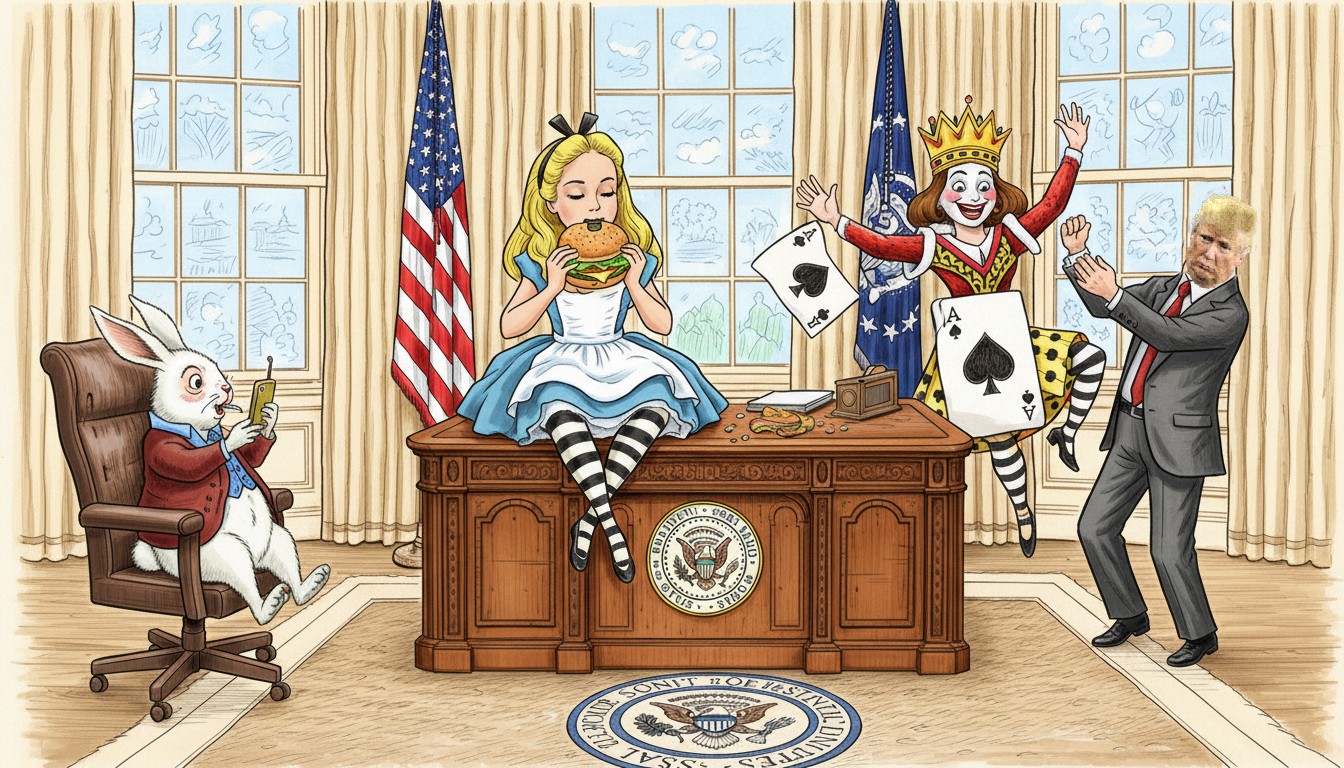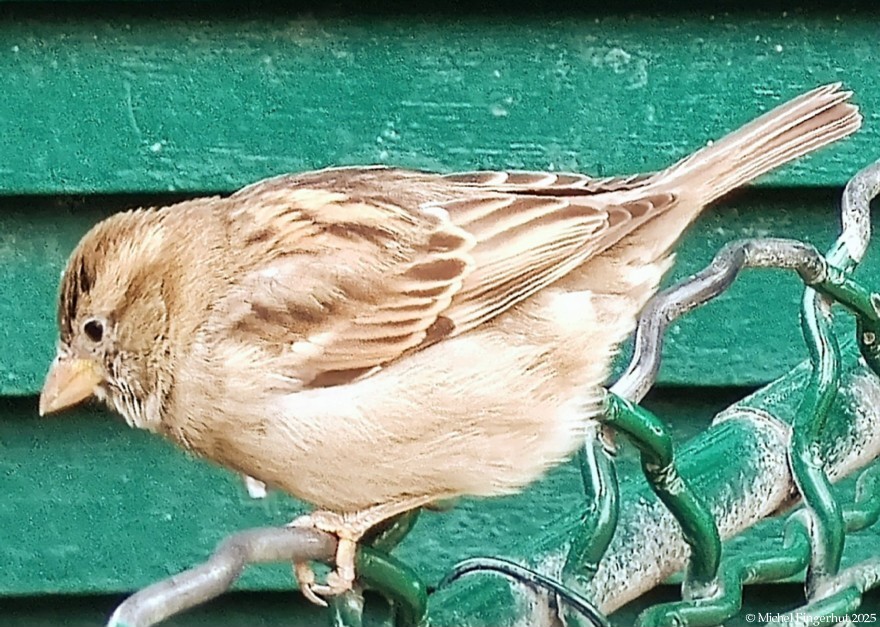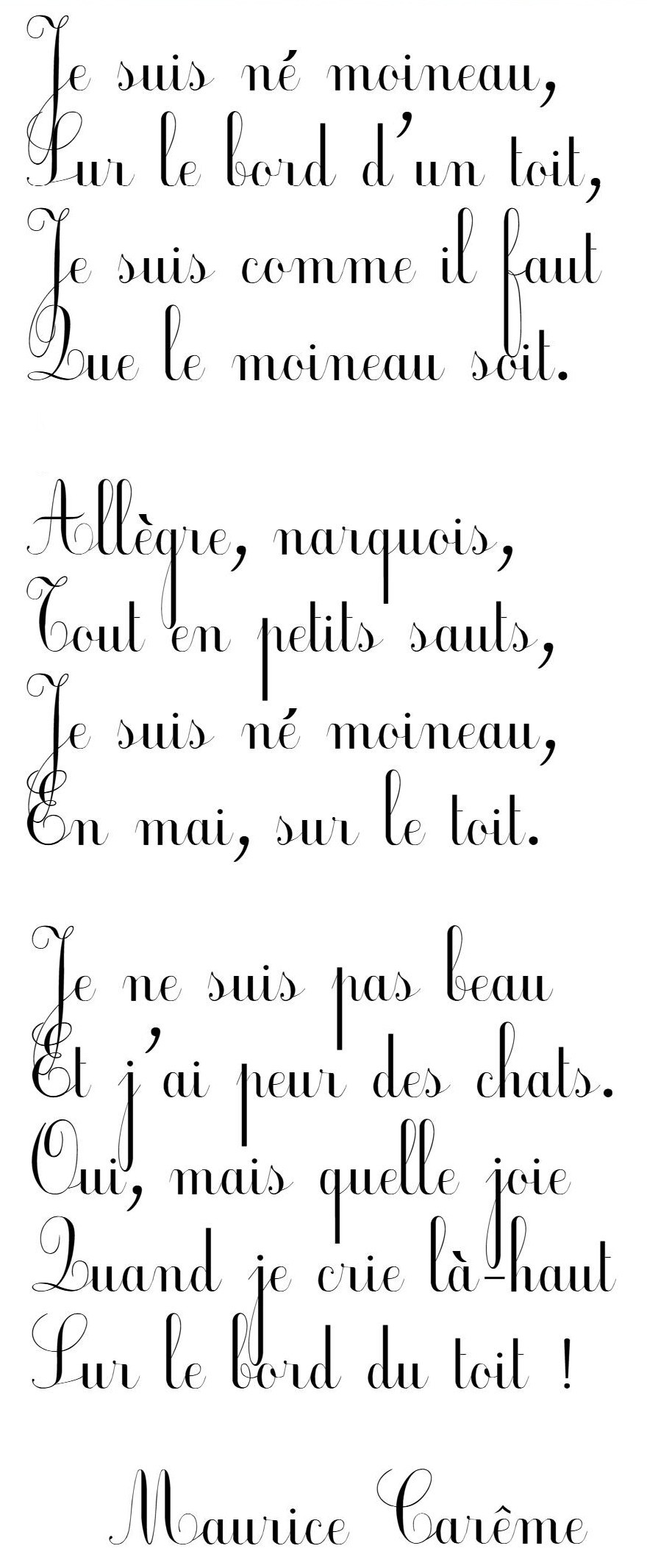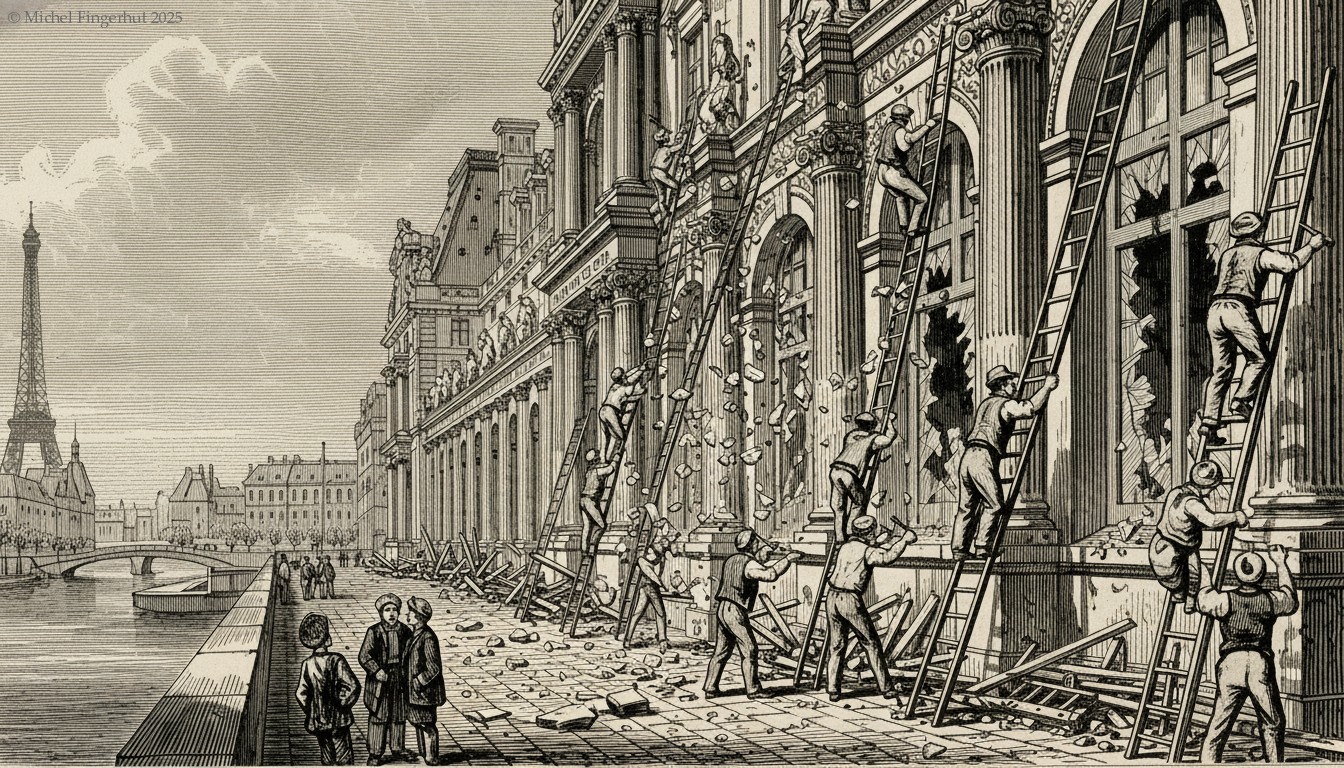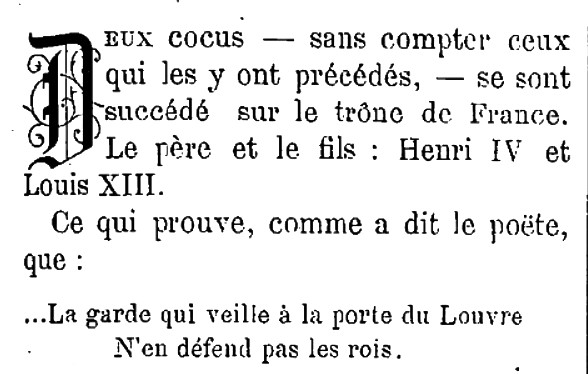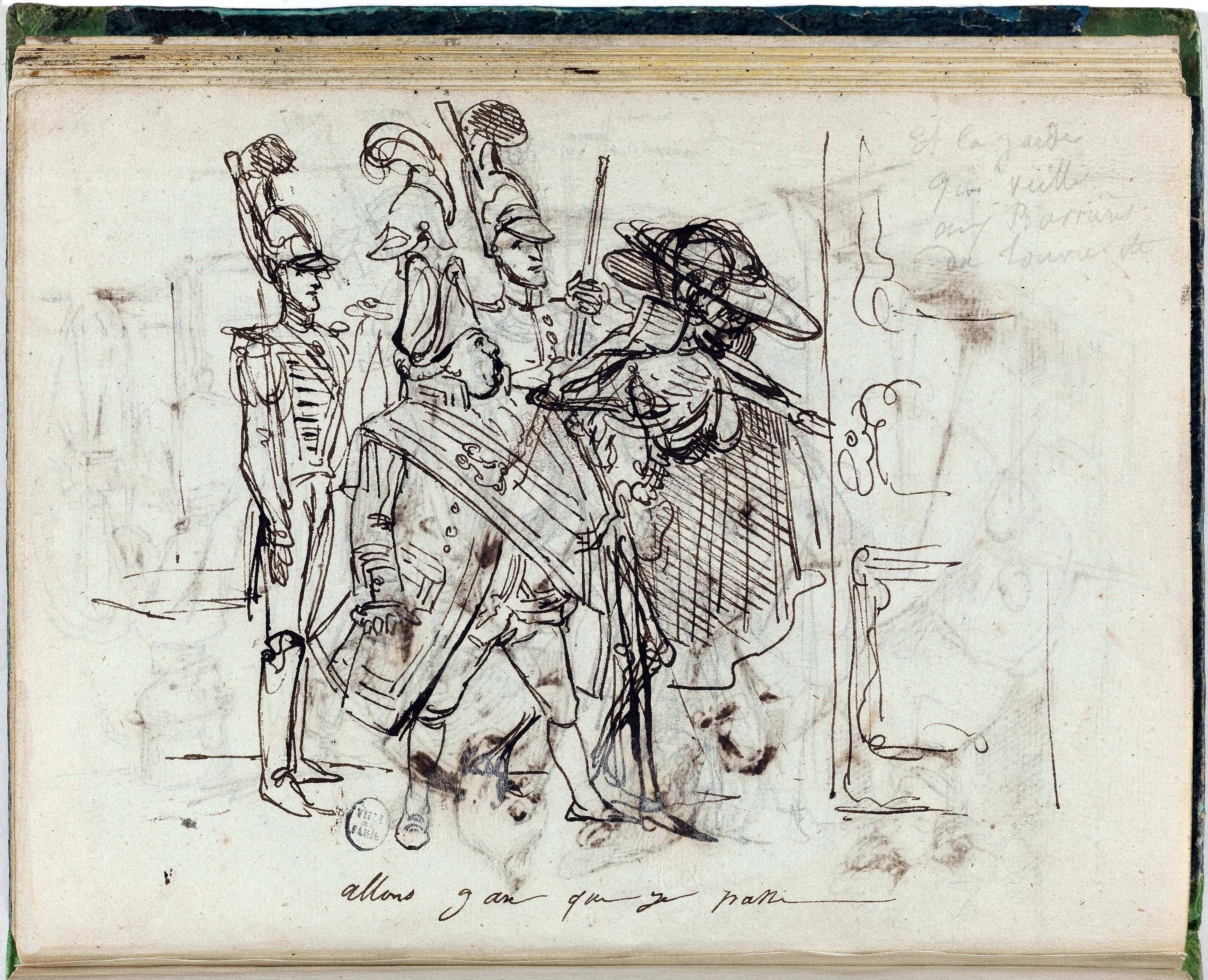« Mieux vaut la fermer quand on s’envoie en l’air » — Toto
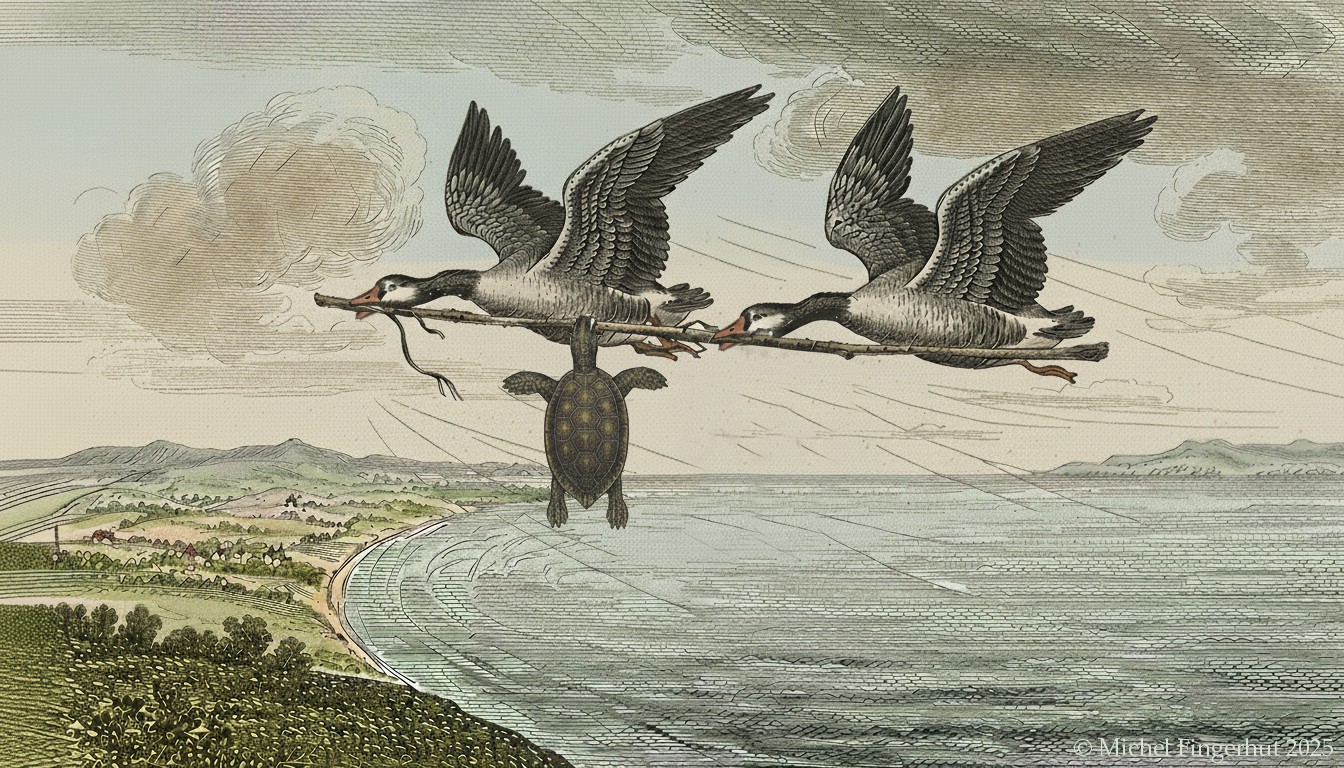 Cliquer pour agrandir. Source : Whisk + corrections
Cliquer pour agrandir. Source : Whisk + corrections
La tortue et les deux canards
Une tortue était, à la tête légère,
Qui lasse de son trou voulut voir le pays.
Volontiers on fait cas d’une terre étrangère :
Volontiers gens boiteux haïssent le logis.
Deux canards à qui la commère
Communiqua ce beau dessein,
Lui dirent qu’ils avaient de quoi la satisfaire :
« Voyez-vous ce large chemin ?
Nous vous voiturerons par l’air en Amérique.
Vous verrez mainte république,
Maint royaume, maint peuple ; et vous profiterez
Des différentes mœurs que vous remarquerez.
Ulysse en fit autant. » On ne s’attendait guère
De voir Ulysse en cette affaire.
La tortue écouta la proposition.
Marché fait, les oiseaux forgent une machine,
Pour transporter la pélerine.
Dans la gueule en travers on lui passe un bâton :
« Serrez bien, dirent-ils : gardez de lâcher prise. »
Puis chaque canard prend ce bâton par un bout.
La tortue enlevée, on s’étonne partout
De voir aller, en cette guise,
L’animal lent et sa maison,
Justement au milieu de l’un et l’autre oison.
« Miracle », criait-on : « venez voir dans les nues
Passer la reine des tortues. »
« La reine ! vraiment oui ; je la suis en effet :
Ne vous en moquez point. » Elle eut beaucoup mieux fait
De passer son chemin sans dire aucune chose ;
Car lâchant le bâton en desserrant les dents,
Elle tombe, elle crève aux pieds des regardants.
Son indiscrétion de sa perte fut cause.
Imprudence, babil, et sotte vanité,
Et vaine curiosité,
Ont ensemble étroit parentage :
Ce sont enfants tous d’un lignage
Jean de La Fontaine
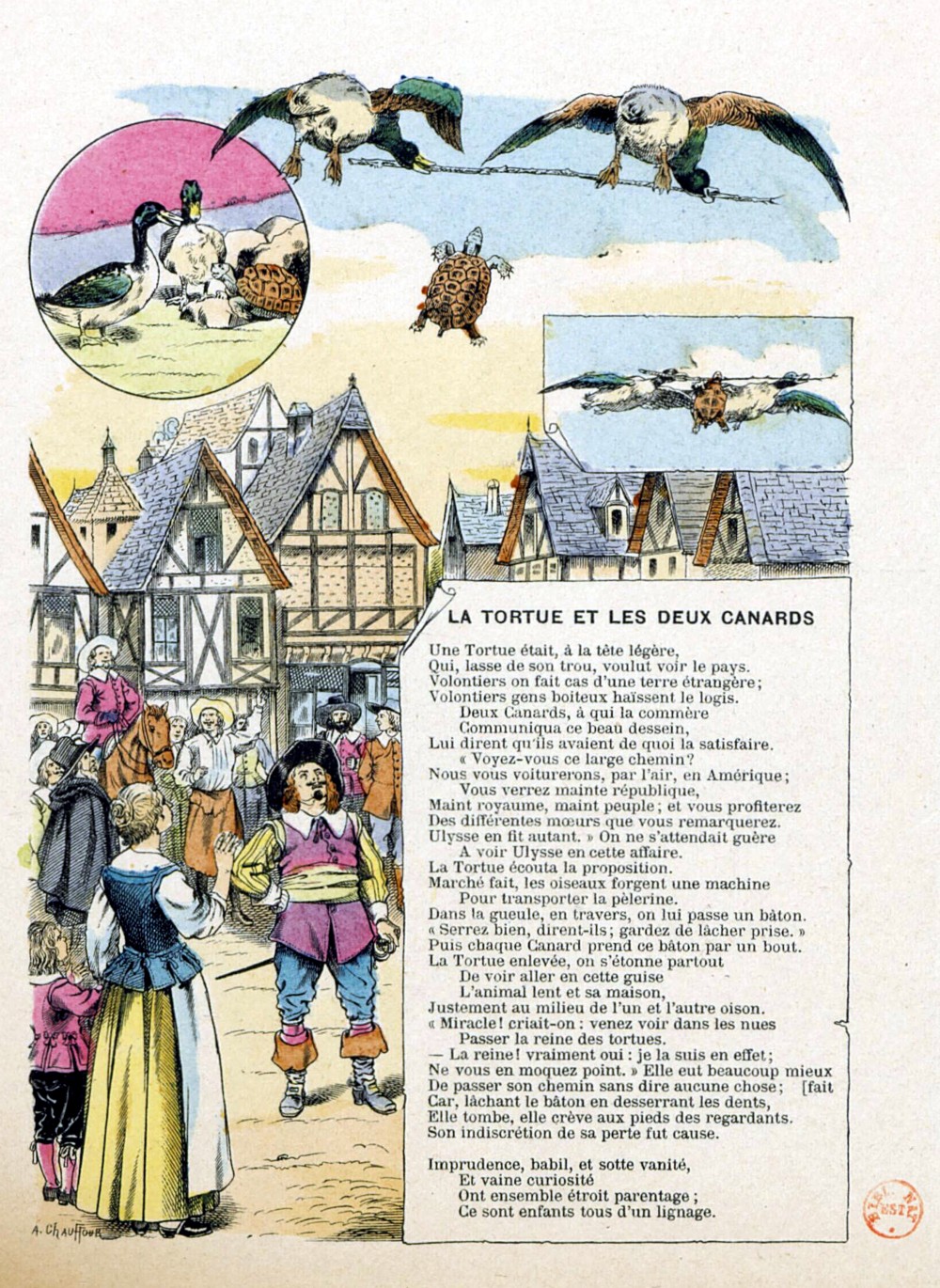 Illustration : A. Chauffour (Épinal, 1895).
Illustration : A. Chauffour (Épinal, 1895).
Cliquer pour agrandir. Source : Gallica
